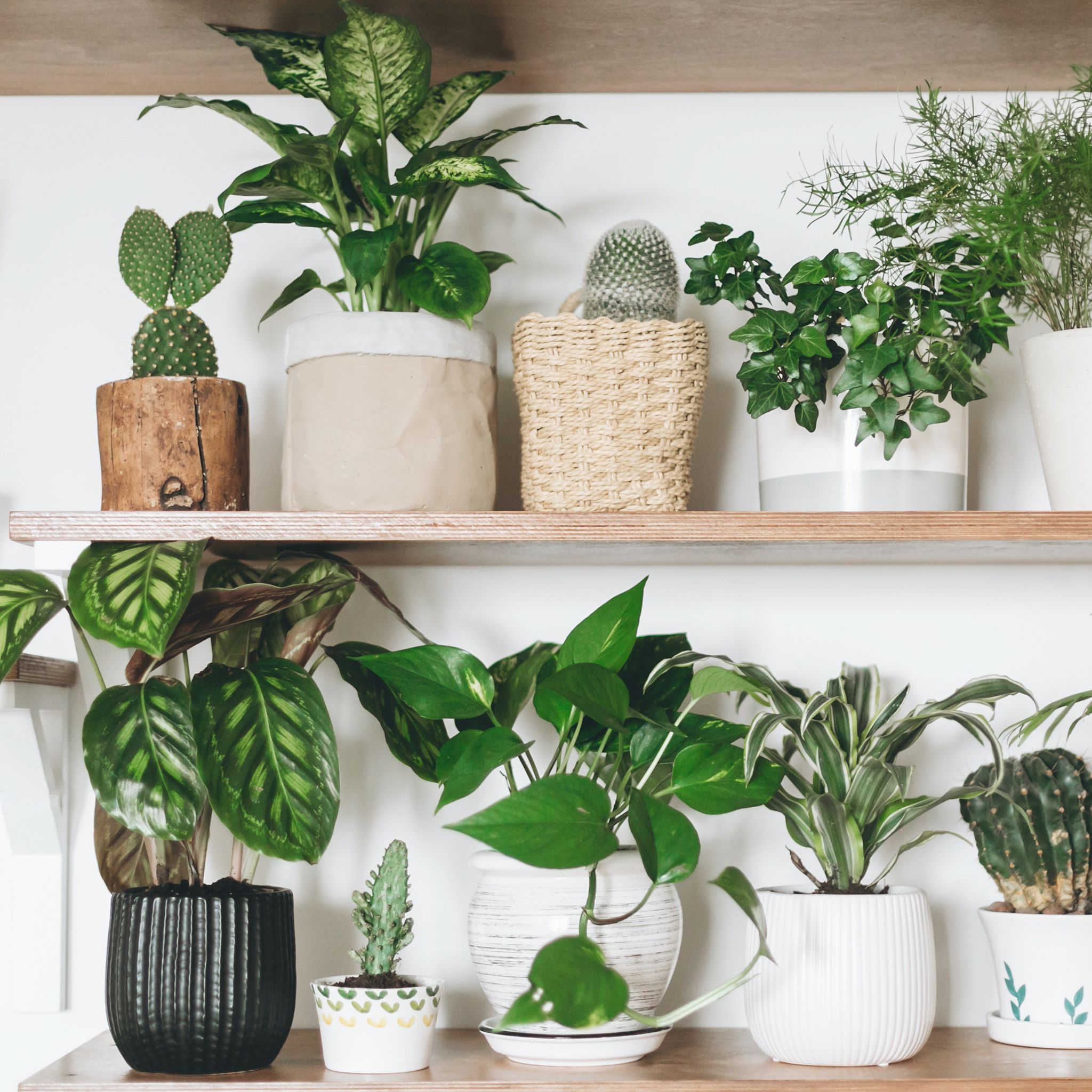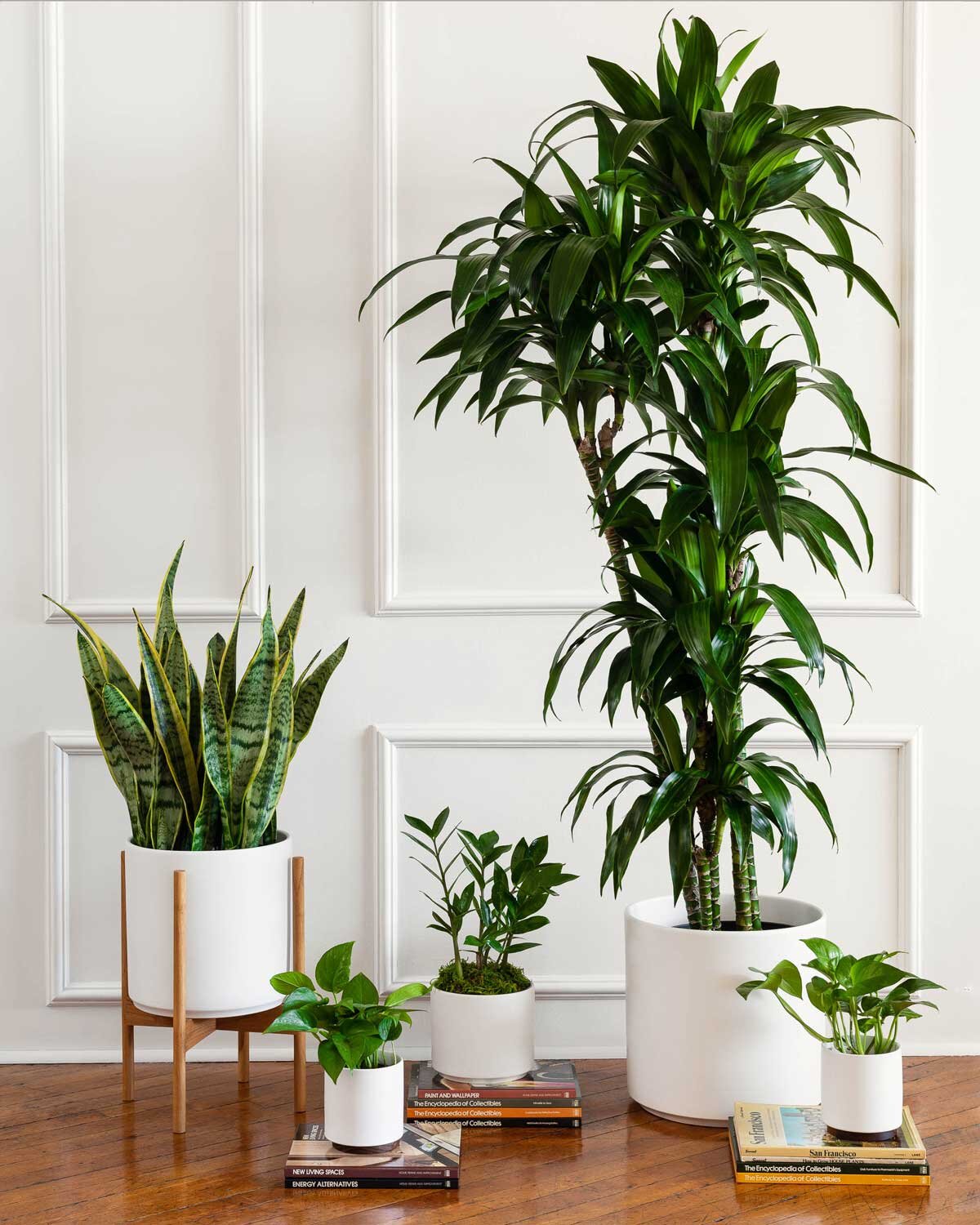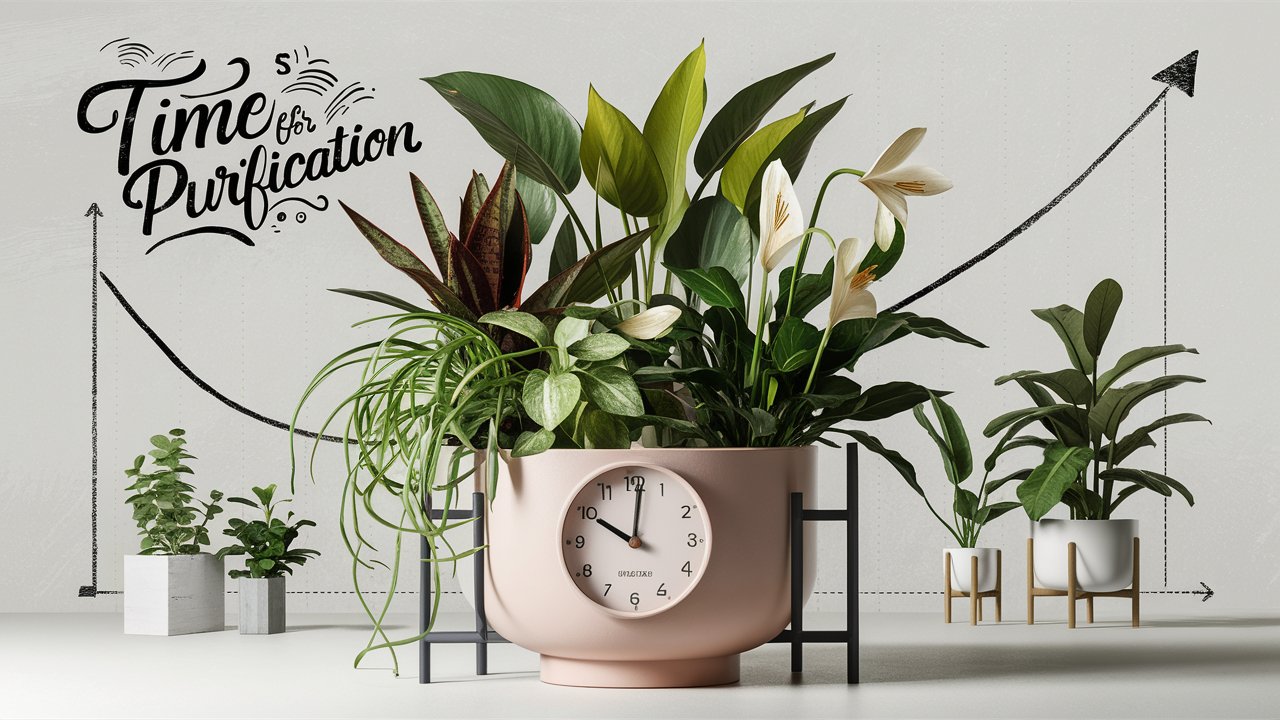Plants can start purifying air within 24 hours. The full impact can take several days to weeks.
Plants are natural air purifiers, absorbing pollutants and releasing fresh oxygen. They enhance indoor air quality, making environments healthier. Popular choices include spider plants, peace lilies, and snake plants. These plants are effective at removing toxins like formaldehyde, benzene, and trichloroethylene.
Indoor plants also add aesthetic value and reduce stress. Introducing a variety of plants in your home or office can create a more pleasant atmosphere. Regular care, such as watering and proper sunlight, ensures they thrive. Investing in indoor plants offers long-term health benefits. Start with a few easy-to-maintain species to experience their air-purifying effects.
Introduction To Indoor Air Quality And Plant Purification
Indoor air quality is vital for our health and well-being. Many people spend most of their time indoors. Clean air helps us breathe better and stay healthy. Plants can help purify the air inside our homes and offices.
The Significance Of Clean Air
Clean air is essential for good health. Pollutants in the air can cause problems. These problems include headaches, allergies, and even asthma. Keeping the air clean reduces these risks. Clean air helps us feel more energetic and focused.
Role Of Plants In Air Purification
Plants play a crucial role in air purification. They absorb harmful toxins through their leaves. Plants then convert these toxins into harmless substances. This process helps improve indoor air quality.
Plants also release oxygen, making the air fresher. Certain plants are better at purifying the air. Examples include the spider plant, snake plant, and peace lily.
| Plant Name | Purifying Ability |
|---|---|
| Spider Plant | Very High |
| Snake Plant | High |
| Peace Lily | Medium |
Using plants indoors can create a healthier environment. This is a simple and natural way to improve air quality. Keep a few plants in your home or office to breathe cleaner air.

Credit: www.countryliving.com
The Science Behind Plants And Air Purification
Plants do more than just look pretty. They also clean the air. This happens through a few key processes. Let’s dive into the science.
Photosynthesis And Air Quality
Plants take in carbon dioxide during photosynthesis. They release oxygen back into the air. This process improves air quality. Leaves absorb gases through tiny openings called stomata. They convert these gases into food and energy.
Plants also release water vapor. This cools the air around them. This is called transpiration. Transpiration helps remove some pollutants.
Common Air Pollutants And Plant Interaction
Plants can remove many common air pollutants. These include:
- Formaldehyde: Found in carpets and furniture.
- Benzene: Found in paints and glues.
- Trichloroethylene: Found in cleaners and adhesives.
Roots and soil microbes also play a role. They break down pollutants. This makes the air cleaner.
To sum up, plants improve air quality through photosynthesis, transpiration, and pollutant breakdown. Different plants clean different pollutants. So, having a variety of plants is best.
Factors Influencing Plant Purification Efficiency
Plants are natural air purifiers. They absorb harmful pollutants and release clean oxygen. But how fast they purify air depends on several factors.
Species Of Plants And Their Purification Capabilities
Different plant species have varying purification abilities. Some plants are better at absorbing specific pollutants. For example, the Spider Plant is excellent at removing formaldehyde. The Peace Lily can filter benzene and trichloroethylene. Below is a table showing different plants and their purification capabilities:
| Plant Species | Purified Pollutants |
|---|---|
| Spider Plant | Formaldehyde |
| Peace Lily | Benzene, Trichloroethylene |
| Boston Fern | Formaldehyde |
| English Ivy | Airborne Fecal Matter |
Environmental Conditions And Growth
The environment affects how well plants purify air. Light, temperature, and humidity all play a role. Plants need proper light to photosynthesize. This process helps them absorb pollutants. Too little light can slow down this process.
Temperature also matters. Most indoor plants thrive in temperatures between 60-75°F (15-24°C). If it’s too cold or too hot, plants may not function properly.
Humidity levels impact plant health, too. Many indoor plants prefer higher humidity. Dry air can stress plants, reducing their efficiency.
In summary, the purification efficiency of plants depends on the plant species and environmental conditions. Choose the right plants and provide optimal care for the best air purification results.
Time Frame For Air Purification With Plants
Plants are natural air purifiers. They improve indoor air quality. But how long does it take for plants to purify the air? Understanding the time frame for air purification is crucial for maximizing their benefits.
Short-term Effects On Air Quality
Plants can quickly impact air quality. Within hours, they start absorbing toxins and pollutants. Common houseplants like spider plants and peace lilies can remove volatile organic compounds (VOCs). Studies show that plants can reduce VOC levels by up to 60% within a day. This makes the air feel fresher and healthier almost immediately.
Long-term Benefits For Indoor Environments
The long-term benefits of plants are even more impressive. Over weeks and months, plants continually filter and purify the air. They reduce levels of carbon dioxide and airborne dust. This creates a cleaner and more pleasant environment.
According to NASA, houseplants can remove up to 87% of toxins in 24 hours. Consistent use of plants leads to a significant decrease in indoor pollutants over time. Here’s a table summarizing the purification capacity of some common houseplants:
| Plant | Toxins Removed | Time Frame |
|---|---|---|
| Spider Plant | Formaldehyde, Xylene | 24-48 hours |
| Peace Lily | Benzene, Trichloroethylene | 48-72 hours |
| Boston Fern | Formaldehyde, Xylene | 24-48 hours |
Using a variety of plants can maximize air purification. Consider adding different species to your indoor space. This ensures a broad range of toxins are removed. The cumulative effect over months leads to a healthier living environment.
Top Plant Species For Air Purification
Indoor air quality is crucial for healthy living spaces. Certain plants can help purify the air. The right plants can remove toxins and improve overall air quality. In this section, we’ll explore the best plant species for air purification.
Nasa Clean Air Study And Plant Selection
The NASA Clean Air Study identified plants that effectively remove toxins. These plants can filter harmful chemicals like benzene, formaldehyde, and trichloroethylene. The study recommends having one plant per 100 square feet.
| Plant Species | Toxin Removed |
|---|---|
| Spider Plant | Formaldehyde, Xylene, Toluene |
| Peace Lily | Benzene, Formaldehyde, Trichloroethylene |
| English Ivy | Benzene, Formaldehyde |
| Boston Fern | Formaldehyde, Xylene |
| Snake Plant | Benzene, Formaldehyde, Trichloroethylene |
Profiles Of Effective Air-purifying Plants
Spider Plant
The Spider Plant is easy to care for. It thrives in indirect sunlight. This plant removes formaldehyde and xylene from the air. It also eliminates toluene.
Peace Lily
The Peace Lily is known for its beautiful white blooms. It can survive in low light conditions. This plant filters benzene, formaldehyde, and trichloroethylene.
English Ivy
The English Ivy is a popular choice for improving air quality. It is effective at removing benzene and formaldehyde. It grows well in a variety of light conditions.
Boston Fern
The Boston Fern is excellent at removing formaldehyde and xylene. It prefers humid environments. This plant needs regular misting to thrive.
Snake Plant
The Snake Plant is also known as mother-in-law’s tongue. It is one of the best plants for filtering indoor air. This plant removes benzene, formaldehyde, and trichloroethylene.

Credit: blog.leonandgeorge.com
Optimizing Plant Placement For Maximum Purification
Plants are natural air purifiers that enhance indoor air quality. Optimizing their placement can significantly boost their efficiency in purifying air. Let’s explore how strategic positioning and thoughtful groupings can maximize their air-cleaning potential.
Strategic Positioning In Indoor Spaces
Place plants in rooms with high foot traffic. This ensures they can capture and filter more pollutants. Living rooms, kitchens, and bedrooms are ideal spots. Position plants near windows to maximize light exposure, aiding their growth and air-purifying abilities.
Ensure plants are not obstructed by furniture. This allows them to spread and absorb more air pollutants. Corner placements can help in maximizing space and air circulation. Use plant stands or shelves to elevate smaller plants. This helps in covering different air layers in a room.
Considerations For Plant Groupings
Grouping plants can enhance their air-purifying efficiency. Different plants absorb different pollutants. Combining various types creates a more comprehensive purification system.
Table of Ideal Plant Combinations:
| Plant Type | Primary Pollutant Removed |
|---|---|
| Spider Plant | Formaldehyde |
| Peace Lily | Benzene |
| English Ivy | Xylene |
Place taller plants behind shorter ones. This ensures all plants receive adequate light. Group plants with similar light and water needs. This makes maintenance easier and keeps plants healthy.
Use a mix of floor plants and hanging plants. This covers a larger area and different air layers. Ensure proper spacing between plants. Overcrowding can reduce air circulation and effectiveness.
Care And Maintenance For Air-purifying Plants
Air-purifying plants are great for improving indoor air quality. To keep them effective, you need to maintain them well. Proper care ensures they remain healthy and continue to purify the air.
Watering, Lighting, And Feeding For Health
Watering is vital for plant health. Most air-purifying plants need moderate watering. Allow the soil to dry out between watering sessions. Overwatering can lead to root rot. Use a pot with drainage holes.
Lighting is another crucial factor. Place your plants in indirect sunlight. Too much direct sunlight can scorch the leaves. Low light can slow their growth.
Feeding your plants helps them thrive. Use a balanced, water-soluble fertilizer. Feed your plants once a month. Overfeeding can harm them. Always follow the instructions on the fertilizer package.
Common Issues And Troubleshooting
Even with good care, plants can face issues. Here are some common problems and solutions:
| Issue | Symptoms | Solution |
|---|---|---|
| Overwatering | Yellow leaves, soggy soil | Reduce watering, ensure proper drainage |
| Underwatering | Dry, brown leaf tips | Increase watering frequency |
| Insufficient Light | Leggy growth, pale leaves | Move to a brighter spot |
| Pest Infestation | Sticky leaves, visible pests | Use insecticidal soap or neem oil |
Inspect your plants regularly. Early detection of issues makes treatment easier. Keep an eye out for pests. Clean the leaves with a damp cloth. This removes dust and helps the plant breathe better.
By following these care tips, your air-purifying plants will stay healthy. They will continue to improve your indoor air quality.
Limitations And Considerations
Plants can help purify the air, but there are limitations and considerations. It’s important to understand these factors to maximize air purification.
Understanding The Limits Of Phytoremediation
Phytoremediation is the process where plants clean the air. But, it has its limits. Plants can’t remove all pollutants. They work best with specific pollutants like formaldehyde and benzene.
One plant may not clean a large space efficiently. It’s better to use multiple plants. The size of the plant also matters. Larger plants generally purify more air. But they also need more care and space.
Air circulation affects how well plants clean the air. Poor circulation can limit effectiveness. Plants also need proper light and water to thrive. Without these, their ability to purify air decreases.
Supplementing Plant Purification With Other Methods
Plants alone may not be enough to purify your air. Combining them with other methods can help. Use air purifiers to remove more pollutants. These devices can catch particles that plants can’t.
Ventilation is another key factor. Opening windows allows fresh air to enter. This helps remove stale, polluted air. Ensure your HVAC system is clean and well-maintained. Dirty filters can hinder air quality.
Regular cleaning is also essential. Dust and vacuum your home often. This removes pollutants that settle on surfaces. Avoid using harsh chemicals. They can introduce new pollutants into the air.
Choose low-VOC products for painting and cleaning. These release fewer harmful chemicals. Using these methods together ensures better air quality.
| Method | Effectiveness |
|---|---|
| Plants | Good for specific pollutants |
| Air Purifiers | Effective for a wide range |
| Ventilation | Helps remove stale air |
| Regular Cleaning | Reduces dust and pollutants |
| Low-VOC Products | Lessens chemical pollutants |
Case Studies And Research Outcomes
Understanding how plants purify air can help us make better choices. Here, we explore real-world examples and scientific studies.
Real-world Examples Of Plant-based Air Purification
Several real-world examples show how plants improve air quality. In an office in the Netherlands, workers added plants to their space. After three months, air quality improved significantly. The plants reduced levels of volatile organic compounds (VOCs).
Another example is a residential building in India. Residents used plants like Areca Palm and Money Plant. These plants lowered indoor pollutants. Air quality improved within a few weeks.
| Location | Plants Used | Time Taken | Pollutants Reduced |
|---|---|---|---|
| Netherlands Office | Various Indoor Plants | 3 Months | VOCs |
| India Residential Building | Areca Palm, Money Plant | Few Weeks | Indoor Pollutants |
Analysis Of Scientific Studies On The Topic
Multiple scientific studies support the idea that plants purify air. A NASA study found that plants can remove up to 87% of toxins in 24 hours. They tested plants like Spider Plant and Peace Lily.
Another study from the University of Technology Sydney showed similar results. Researchers found that Ferns and Bamboo Palms can reduce formaldehyde levels. The study lasted four weeks, showing continuous improvement.
- NASA Study: 87% toxin removal in 24 hours
- University of Technology Sydney: Reduced formaldehyde in four weeks
Both studies highlight the effectiveness of plants. These findings suggest that using plants can be a natural way to clean indoor air.
Conclusion And Recommendations For Clean Air
Many people ask about the time plants need to purify air. Understanding this helps in planning for cleaner indoor spaces. Let us explore the potential of plants and best practices for using them.
Summing Up The Potential Of Plants
Plants can purify the air efficiently. They absorb toxins through their leaves and roots. Studies show some plants are better at air purification. Spider plants, snake plants, and peace lilies are excellent choices. They remove pollutants like formaldehyde, benzene, and carbon monoxide.
Each plant has its own rate of air purification. The NASA Clean Air Study found that some plants can remove up to 87% of toxins in 24 hours. This depends on the type of plant and the amount of air it is exposed to.
Best Practices For Utilizing Plants For Cleaner Air
To maximize the air-purifying potential of plants, follow these best practices:
- Choose the right plants: Select plants known for their air-purifying abilities.
- Quantity matters: Use more plants for better results. Aim for one plant per 100 square feet.
- Proper placement: Place plants in areas with good air circulation.
- Regular care: Water and maintain plants to keep them healthy.
- Combine with other methods: Use plants with air purifiers for optimal results.
Here is a table summarizing the best air-purifying plants and their benefits:
| Plant Name | Pollutants Removed | Maintenance Level |
|---|---|---|
| Spider Plant | Formaldehyde, Xylene | Low |
| Snake Plant | Benzene, Formaldehyde, Trichloroethylene | Low |
| Peace Lily | Benzene, Formaldehyde, Ammonia | Medium |
By using these tips, you can create a healthier environment. Plants are a natural, effective way to improve air quality.

Credit: molekule.com
Frequently Asked Questions
How Many House Plants Does It Take To Purify The Air?
NASA recommends 15-18 house plants for a 1,800 square foot home to effectively purify the air.
Which Plant Purifies The Air The Most?
The plant that purifies the air the most is the Peace Lily. It removes toxins effectively.
Do Indoor Plants Really Improve Air Quality?
Yes, indoor plants can improve air quality. They remove toxins, increase humidity, and produce oxygen.
Is It Healthy To Sleep In A Room With Plants?
Yes, it’s healthy to sleep in a room with plants. They improve air quality, reduce stress, and increase humidity.
Conclusion
Purifying air with plants is a natural and effective method. Results vary based on plant type and environment. Incorporate a variety of plants for optimal air quality improvement. Regular care ensures plants thrive and maximize their purifying abilities. Embrace this eco-friendly solution for a healthier living space.

My mission is to help you bring the beauty of nature indoors with expert advice, detailed plant care guides, and creative design ideas.




